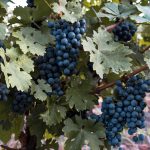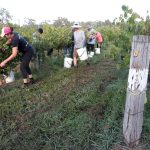With several wine regions still assessing the impact of recent bushfires, journalist Samuel Squire asked how insurance cover for wineries and vineyards has measured up.
Many wine producing regions in Australia were either directly or indirectly affected by bushfire-related damage over summer, with the potential of smoke taint still hanging over the future of Vintage 2020 for many producers.
When it comes to insurance cover for such devastating events there is a perception that policies are ‘lacklustre’ and don’t feasibly offer adequate assistance for businesses to rebuild after a damaging event.
Brian Smedley, chief executive of the South Australian Wine Industry Association, says there’s often confusion among wine business operators surrounding what their insurance policies actually cover.
Smedley said to avoid insurance falling short of expectations, businesses need to ‘take a magnifying glass’ to their policies so they fully understand where they may fall short.
He said it is important that, when applying for insurance, a comprehensive risk assessment is carried out first.
“Winery and vineyard insurance is not necessarily about whether you can or cannot get coverage, but whether you can appropriately assess what you can feasibly insure,” he said.
“I think that the main issue is to make sure that people understand the language and terms as well as what it is that they’re actually buying.
“People may think they were covered and come to realise, when something like [the recent bushfires] happen, their insurance wasn’t what they need.”
Smedley added: “What we’re seeing happen now, is insurance companies are starting to work with wine producers to resolve those issues around fire damage”.
Midland Insurance Brokers (MIB), based in Victoria, said that insurance policies can help under certain circumstances, but to what degree will depend on the individual policy that’s taken out.
Senior insurance broker and winery/vineyard insurance specialist at MIB, Joshua Kerr, said there are policies in place that do cover bushfire damage, although the extent of such coverage is determined by site-specific data such as the size and location of the winery or vineyard.
More caution from insurers
In light of the recent bushfires, Kerr alluded that some insurers may now become more cautious when it comes to insuring properties in ‘at-risk’ areas.
“There are policies for property and crop/vineyard which are essential in covering bushfire damage including cover for loss of income, as the lost assets can’t be replaced overnight,” Kerr said.
“It is likely insurers will be more cautious in insuring risks in remote locations but given strong risk management, good housekeeping and fire action plans, cover will be available.
“As to the likelihood of premiums increasing, there had already been a trend across the past 12 months of increasing premiums and, given the horror start to the year, this is likely to continue.”
Kerr added producers that sustained crop or income losses due to smoke taint won’t be helped by insurance.
“There is no cover available in the Australian insurance market, to our knowledge, of insuring for smoke taint damage,” he said.
Kerr doesn’t expect there to be any changes to the way insurers approach the wine sector.
“I don’t believe there will be many changes to available insurance policies following these bushfires. [Bushfires] are part of the Australian landscape and insurers will continue to provide cover where they can,” he said.
“There may be changes to what insurers will and won’t insure and to the information they need, but there will always be a solution.”
As detailed in our report (on page 54) about the Adelaide Hills bushfires that occurred right before Christmas last year, some growers were caught out by shortfalls in their insurance coverage.
‘Incredibly expensive’
Barrister’s Block Wines lost its vineyard to the flames. Owner, Jan Siemelink-Allen, said that she, like many affected local wine businesses, didn’t have insurance that covered her entire vineyard site because the premiums for such extensive coverage are “incredibly expensive”.
She believes vineyard insurance falls well short on what wine businesses will need to make a full recovery from such devastation.
“We don’t have any policy that will cover our redevelopment and I don’t think there are too many producers that do,” she said.
“Personally, I think there is a gap in wine business insurance. But it’s also about whether the business can afford to pay for these policies […] as they are so incredibly expensive.
“There is no way to tell if things will stay the same price they have been. To be able to insure our property fully would have cost hundreds of thousands of dollars,” she concluded.
This article was originally published in the April issue of The Australian & New Zealand Grapegrower & Winemaker. To find out more about our monthly magazine, or to subscribe, click here!





















